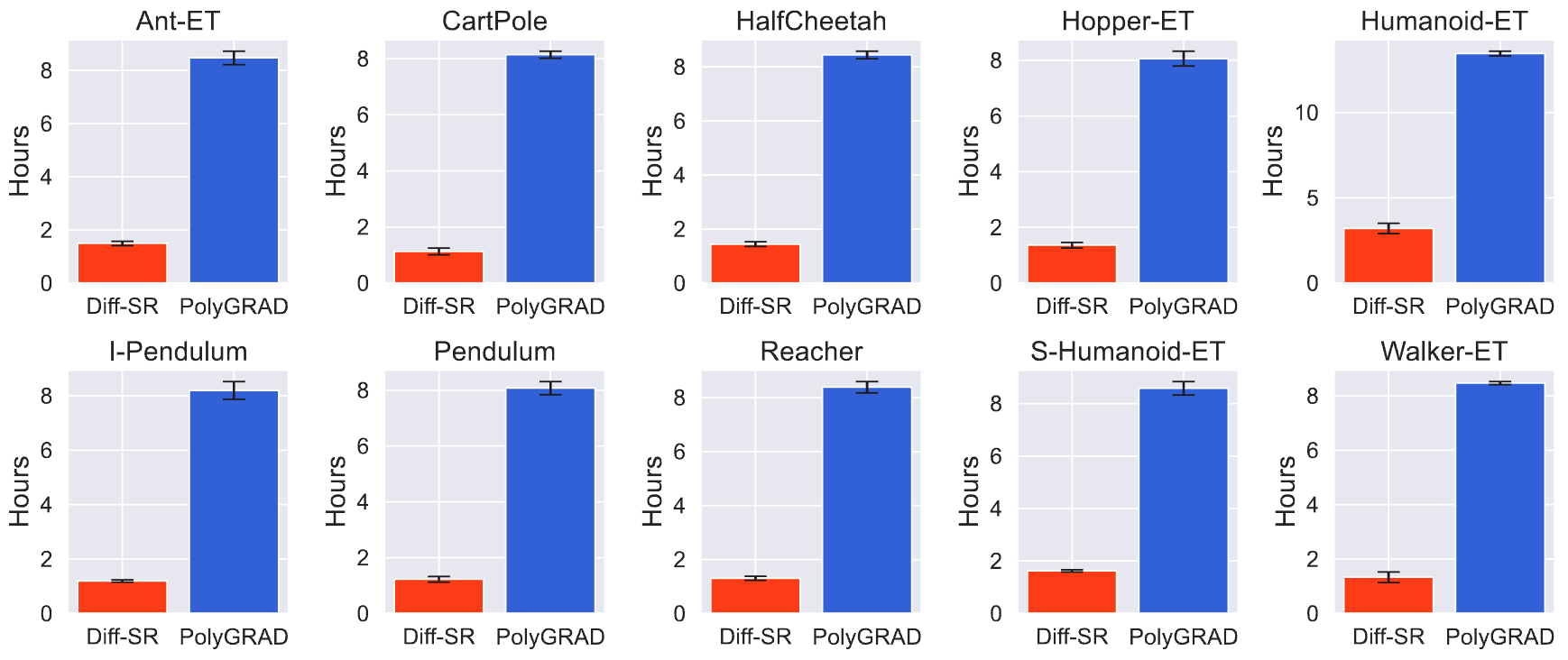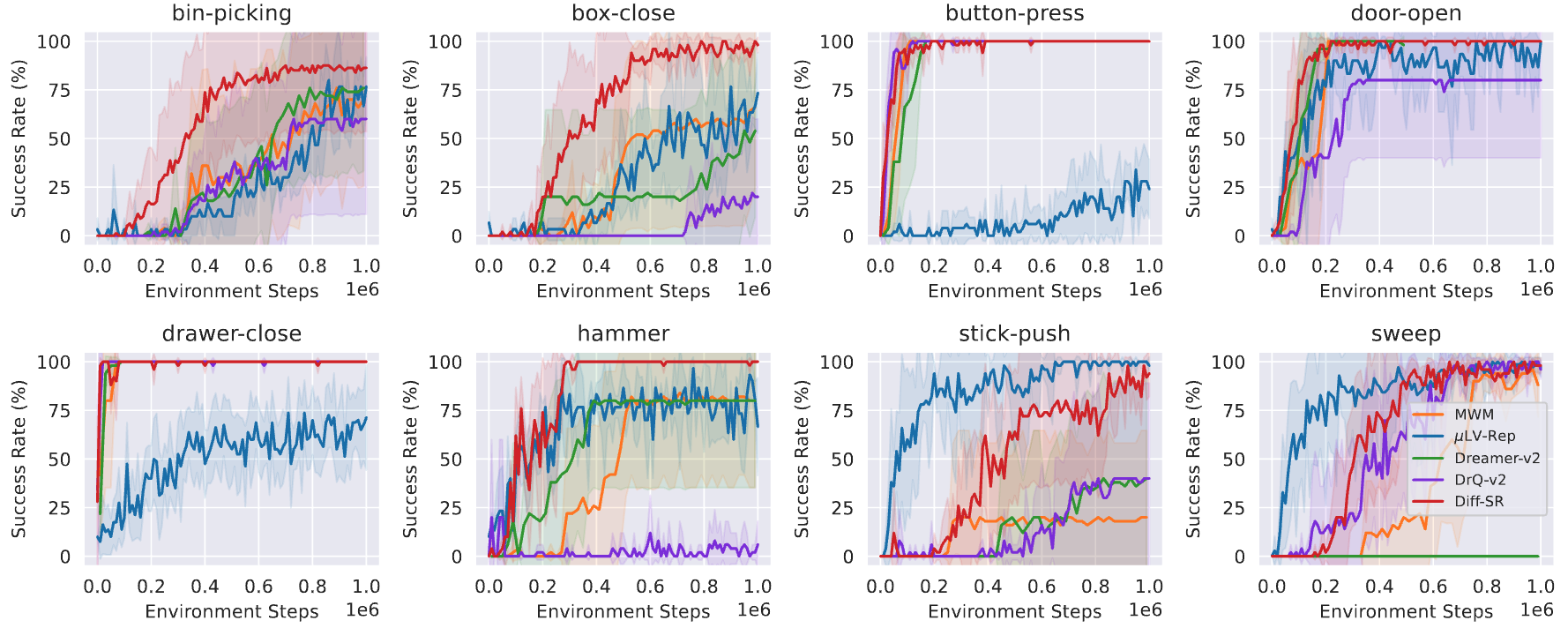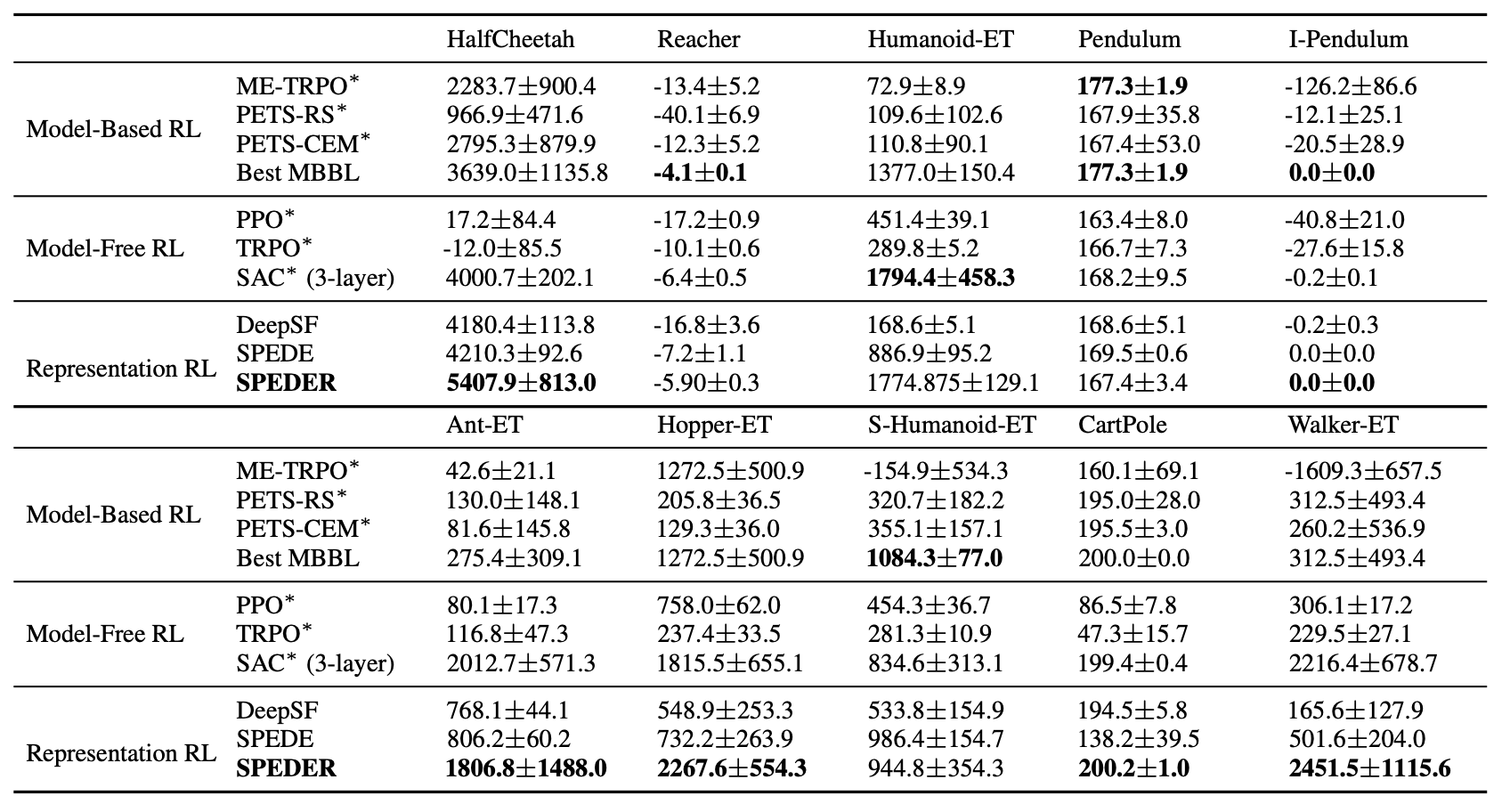We address the lingering computational efficiency issues in representation learning for linear MDPs. We provide solutions to the aforementioned difficulties, bridge the gap between theory and practice, and eventually establish a sound yet practical foundation for learning in linear MDPs. More specifically:
- We clarify the importance of the normalization condition and propose a variant of linear MDPs wherein it is easy to enforce normalization;
- We develop the ConTrastive Representation Learning algorithm, CTRL, that can implicitly satisfy the density requirement;
- We incorporate the representation learning techniques in optimistic and pessimistic confidence-adjusted RL algorithms, CTRL-UCB and CTRL-LCB, for both online and offline RL problems, and establish their sample complexities respectively;
- We conduct a comprehensive comparison to existing state-of-the-art model-based and model-free RL algorithms on several benchmarks for the online and offline settings, demonstrating superior empirical performance of the proposed CTRL.

 Finally, this figure provides learning curves of LV-Rep-C and LV-Rep-D in comparison to SAC, which clearly shows that comparing to the SOTA (state-of-the-art) model-free baseline SAC, LV-Rep enjoys great sample efficiency in these tasks.
Finally, this figure provides learning curves of LV-Rep-C and LV-Rep-D in comparison to SAC, which clearly shows that comparing to the SOTA (state-of-the-art) model-free baseline SAC, LV-Rep enjoys great sample efficiency in these tasks.





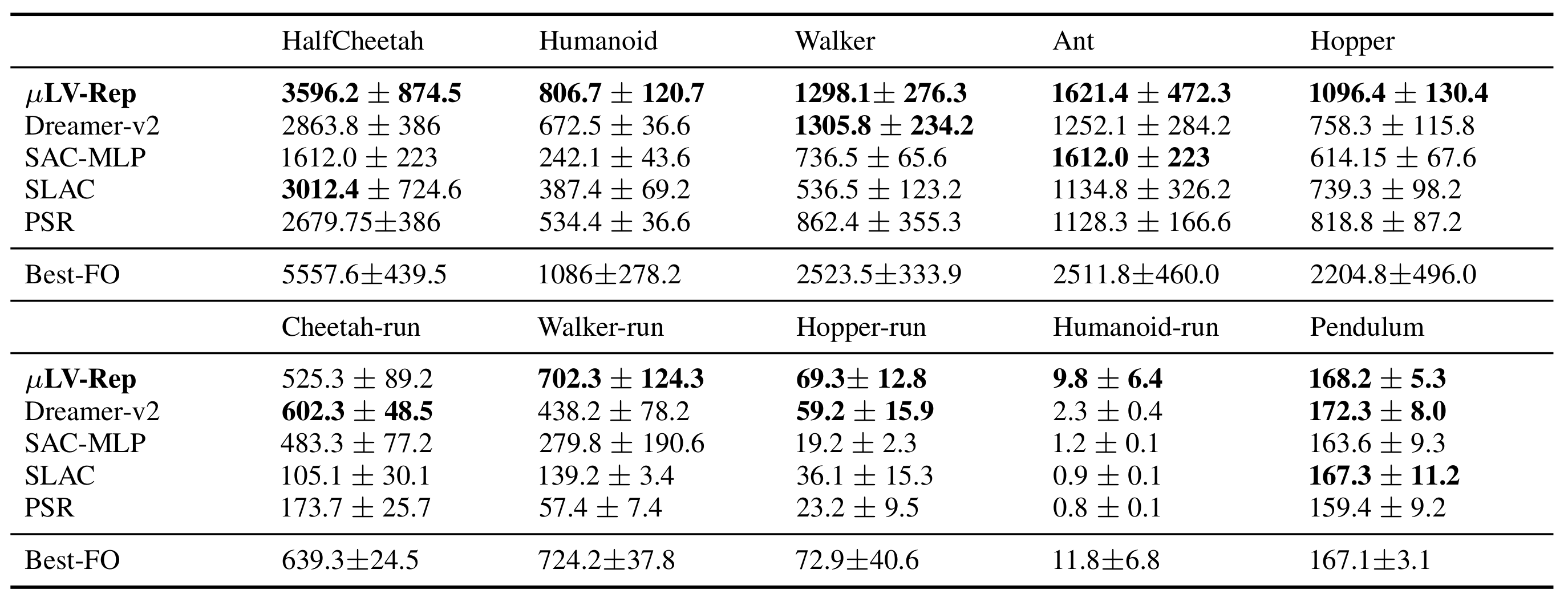

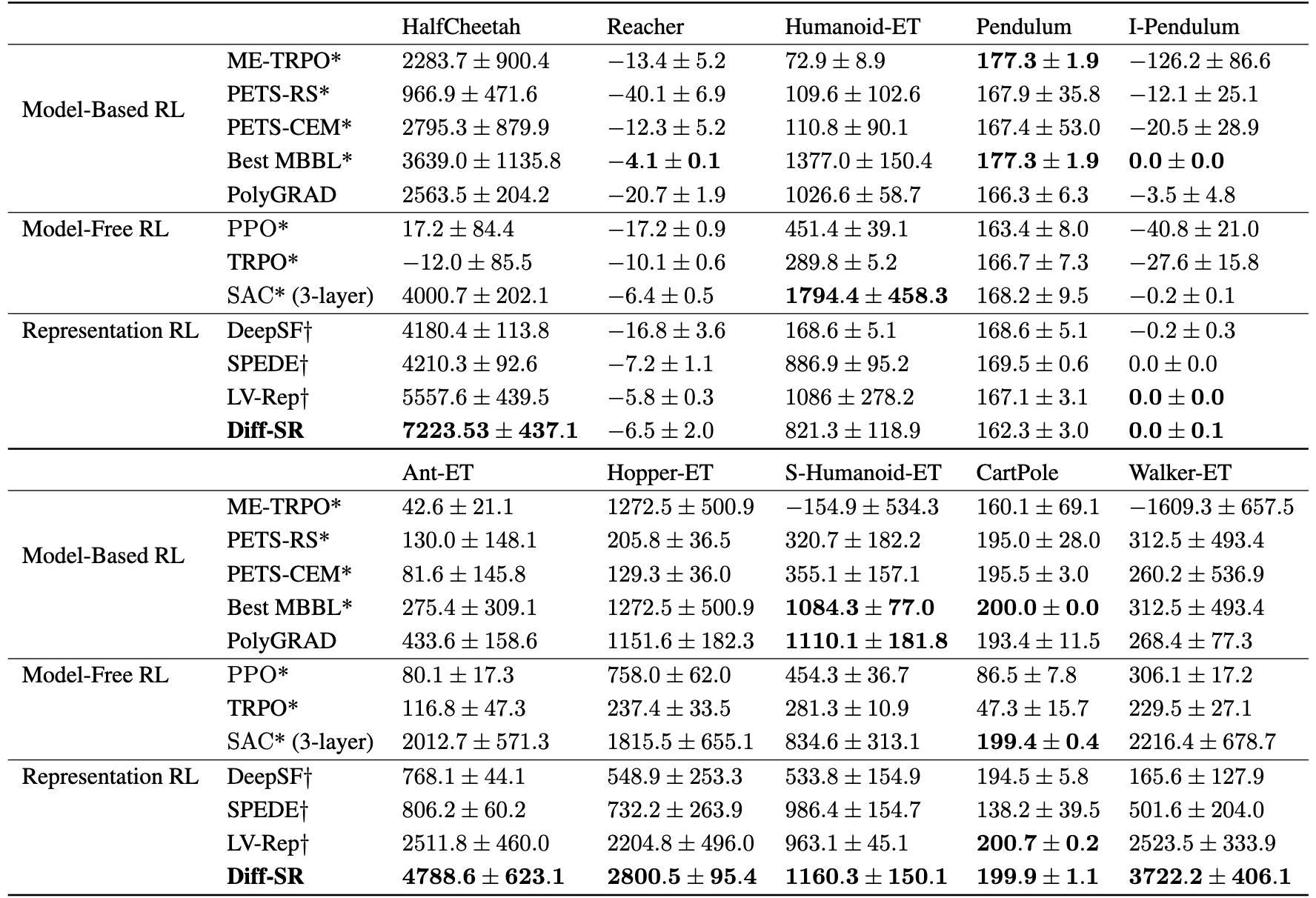 Besides its superior performance, Diff-SR does not require sampling from the diffusion model while still leverages the flexibility of diffusion models. This leads to 4x faster training speed compared to other diffusion-based RL methods, as we observed in our experiments (see the next figure).
Besides its superior performance, Diff-SR does not require sampling from the diffusion model while still leverages the flexibility of diffusion models. This leads to 4x faster training speed compared to other diffusion-based RL methods, as we observed in our experiments (see the next figure).
